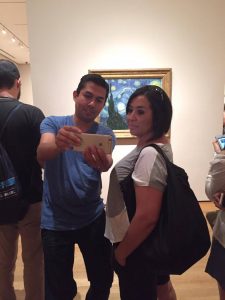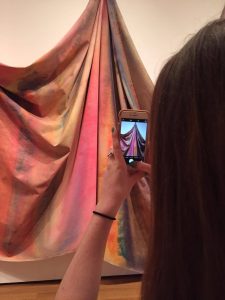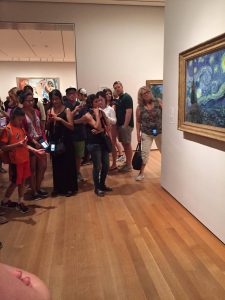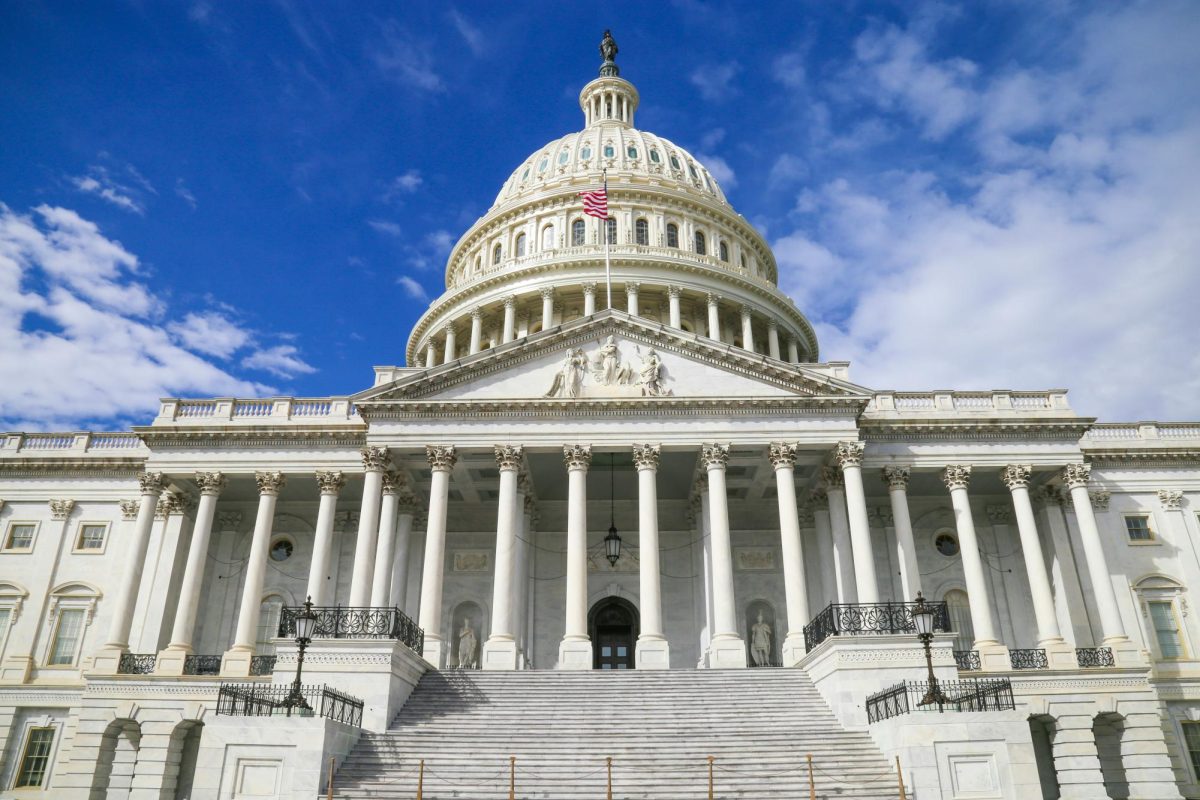The MoMA in NYC is a captivating place, not only due to its innovative and beautiful exhibits, but also because of the chaotic and bustling crowds surrounding the artwork, madly snapping selfies.

While these social media junkies may be impeding others from viewing the art, they’re actually helping the museum—attracting patrons and allowing visitors to interact with the art.
Photography should be allowed at every art museum—but not without limits. Museums should allow non-flash photography, as well as place limits on how close a person can get to the art, to ensure that guests don’t block the artwork. This approach will not only clarify protocols, but also proactively get ahead of the issue.
The MoMA allows non-flash photography in almost every gallery, excluding some of the temporary collections. This policy—first implemented in 2013—is designed to promote a deeper connection with the art. Some pieces, like the popular 2013 exhibit, the “Rain Room,” were even crafted specifically to increase popularity and encourage photo sharing on social media platforms, a MoMA employee said.
Other art museums are catching on: D.C.’s own Renwick Gallery enacted a similar open-photo policy last year.
WONDER, Renwick’s inaugural exhibit that opened in 2015, was designed to remove the negative connotation associated with museums by the general public and establish a strong social media presence, a curator said.
Due to these benefits, other galleries should follow this lead and enact similar policies.
Technology is an integral part of the world today, and museums need to recognize this transition and use social media to their advantage.

People want to post an artsy picture on Instagram or share a unique selfie on Snapchat, allowing photography provides museums with free publicity, more visitors and a spike in interest from people who typically wouldn’t be interested in museums: specifically teens.
Pictures are some patrons’ way of engaging with the art: they take pictures in order to make meaning of the art for themselves, students said.
The obvious problem with allowing unlimited photography is that people block the artwork in order to capture the perfect shot, exclusively viewing the work and forcing everyone else to wait to see the piece. Others spend time snapping selfie after selfie—Kim Kardashian-esque—which is exasperating.
Another drawback is the fact that visitors’ smartphones can distract them from truly appreciating the art. People end up viewing the painting through an iPhone lens, instead of actually looking up at the work right in front of them. Art needs to be “seen in the flesh,” one MoMA patron argued.
These objections are valid. But it seems unfair to ban photography entirely: making technology part of a museum visit is one major way to integrate modern culture with art that has been around for centuries.

So when enacting open photography policies, museums should simultaneously prohibit the use of flash. There also need to be limits for how close a person can get to the art, to ensure guests don’t block the artwork. This approach will not only clarify the protocol, but also proactively get ahead of the issue.
Policies like the ones at MoMA and the Renwick make art and history more accessible to teens. Teens are able to connect with the art in a way that relates to their lives—social media.
Museums should leave history to their art and join the rest of us in the 21st century.
















